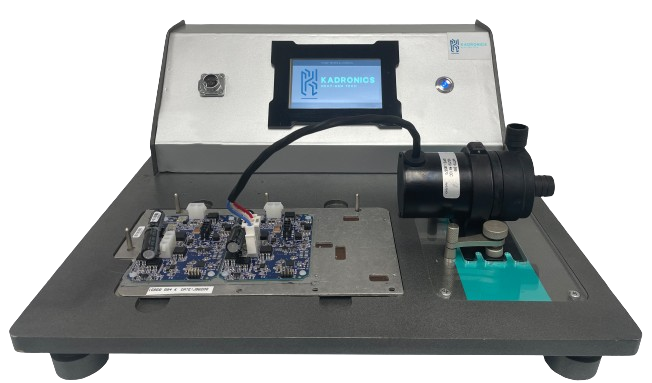Investing in an automated pump tester is a critical decision for industries where pumps play a central role in operations. From automotive and aerospace to manufacturing and energy, pumps are responsible for fluid movement, cooling systems, hydraulics, and a wide range of mechanical processes. Because of their importance, testing pumps for performance, durability, and efficiency is not just about quality assurance—it is about safety, compliance, and cost savings. An automated pump tester helps streamline this process by eliminating human error, reducing testing time, and ensuring repeatable, reliable results. Before committing to such an investment, it is essential to understand the factors that influence the right choice of tester and how to evaluate your options effectively.
Why Automated Pump Testing Matters
Traditional pump testing methods often rely on manual intervention and observation. This approach introduces the risk of inconsistency, slows down throughput, and may overlook subtle performance issues. Automated pump testers, on the other hand, provide controlled testing environments, digital data collection, and integration with analysis software. They can run multiple cycles, simulate real-world operating conditions, and record precise measurements. For industries where pumps must perform under strict tolerances, automation ensures compliance with international standards and reduces the chances of costly failures in the field. In addition, as industries move toward Industry 4.0 and smart manufacturing, automated testing aligns with predictive maintenance strategies and digital twin integration.
Key Features to Look For in an Automated Pump Tester
Not all pump testers are created equal, and the right system depends heavily on your industry and application. When evaluating an automated pump tester, consider these core features:
- Pressure and Flow Range: Ensure that the tester supports the full spectrum of pressures and flow rates your pumps will encounter. A mismatch here can render the tester ineffective.
- Data Acquisition and Analysis: Modern testers should include sensors for flow, pressure, vibration, and temperature, along with software that provides real-time monitoring and data logging.
- Automation and Repeatability: Look for systems that allow programmable test sequences, automatic calibration, and reproducibility to minimize variability between tests.
- Safety and Compliance: Depending on your industry, testers must adhere to standards such as ISO, ASTM, or SAE. Safety interlocks and fail-safes are essential to protect both the equipment and operators.
- Scalability and Customization: Some businesses may need testers that adapt to different pump types and sizes. Modular systems allow greater flexibility as your product range expands.
- Integration with Existing Systems: Compatibility with enterprise resource planning (ERP) or manufacturing execution systems (MES) can provide added value by connecting test results directly into production and quality management workflows.
Cost Considerations
Investing in an automated pump tester requires careful financial planning. The initial cost can range from tens of thousands to hundreds of thousands of dollars depending on complexity, capacity, and customization. However, the return on investment (ROI) often justifies the upfront expense. Automated testing reduces labor costs, minimizes rework, and extends product lifecycle by identifying failures earlier in development. Businesses should also account for training, maintenance, and potential software licensing fees. When comparing vendors, it is crucial to evaluate total cost of ownership rather than just the purchase price.
Industries That Benefit Most from Automated Pump Testers
While any sector relying on pumps can benefit, some industries see particularly strong advantages:
- Automotive: Testing water pumps, fuel pumps, and hydraulic pumps under different load conditions to ensure performance and longevity.
- Aerospace: Safety-critical pumps used in hydraulics and cooling systems must be tested under extreme conditions for regulatory compliance.
- Oil & Gas: Pumps in this sector often operate in harsh environments, making durability testing vital to avoid catastrophic failures.
- Manufacturing: Production lines using pumps for fluid transfer or cooling rely on efficiency and uptime, which automated testers help secure.
- Renewable Energy: Systems such as wind turbines or solar plants often involve pump-based cooling or hydraulics where efficiency is directly tied to performance.
Common Pitfalls to Avoid
Businesses often make mistakes when investing in testing equipment by either underestimating their current needs or failing to plan for future requirements. Some common pitfalls include:
- Buying a Generic Tester: A one-size-fits-all solution may not provide the accuracy or compliance needed for specific applications.
- Ignoring Data Capabilities: Without proper data logging and analysis, automated testing loses much of its advantage.
- Overlooking Maintenance: Automated testers themselves need regular calibration and servicing to remain accurate.
- Focusing Only on Price: Low-cost testers often lack long-term support, scalability, or compliance with evolving industry standards.
The Future of Pump Testing
As industries embrace smart manufacturing, pump testing is moving beyond simple pass/fail metrics. Predictive maintenance powered by artificial intelligence and machine learning is becoming a standard feature, with testers generating insights into pump health and lifespan. Digital twins—virtual models of physical pumps—can now integrate with test results, allowing companies to simulate performance across scenarios without physically stressing the hardware. Cloud-based reporting and analytics are also growing in adoption, giving decision-makers real-time visibility into testing outcomes across global facilities. Investing in an automated pump tester today means preparing your operations for these future advancements.
Making the Right Investment
Choosing an automated pump tester is about aligning technology with your operational goals. The right tester improves product quality, enhances safety, ensures compliance, and provides long-term cost savings. When evaluating options, prioritize accuracy, repeatability, data capabilities, and vendor support. Engage with suppliers who offer customization, after-sales service, and upgrade paths as technology evolves. By making an informed investment, companies can reduce risk, improve efficiency, and position themselves at the forefront of innovation in their industry.




